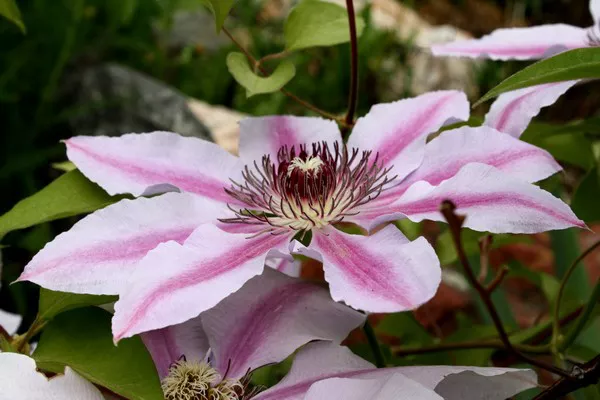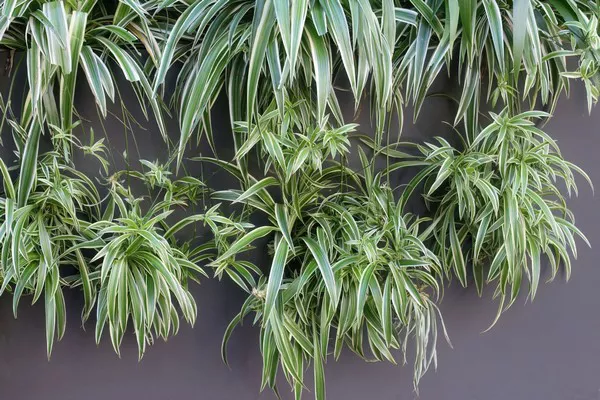Clematis, with its stunning array of colors and graceful blooms, is a beloved flowering vine that graces gardens, arbors, and trellises around the world. Known for its versatility, resilience, and abundance of cultivars, clematis offers something for every garden style and climate. In this article, we embark on a journey to explore the most common varieties of clematis, delving into their characteristics, growing requirements, and tips for cultivation.
Understanding the diversity of clematis varieties not only enriches our appreciation for these enchanting plants but also equips gardeners with the knowledge to select the perfect cultivars for their landscapes.
Most Common Clematis Varieties
1. Clematis ‘Nelly Moser’:
One of the most popular and recognizable clematis varieties, ‘Nelly Moser’ captivates with its large, pale pink flowers adorned with a striking mauve central stripe. This vigorous vine blooms profusely in late spring to early summer, creating a spectacular display on trellises, fences, and pergolas.
Clematis ‘Nelly Moser’ thrives in well-drained soil with ample sunlight and benefits from regular pruning to encourage new growth and abundant flowering. With its hardy nature and exquisite blooms, ‘Nelly Moser’ is a timeless favorite among gardeners worldwide.
2. Clematis ‘Jackmanii’:
Renowned for its deep purple flowers and robust growth habit, ‘Jackmanii’ is a classic clematis variety that commands attention in the garden. This vigorous vine blooms prolifically from mid to late summer, covering arbors, walls, and fences with a profusion of richly colored blooms.
Clematis ‘Jackmanii’ prefers a sunny location with fertile, well-drained soil and benefits from regular watering and feeding during the growing season. Pruning in late winter or early spring helps maintain its vigorous growth and ensures abundant flowering year after year.
3. Clematis ‘Henryi’:
With its elegant, creamy-white flowers and dark green foliage, ‘Henryi’ adds a touch of sophistication to any garden setting. This reliable clematis variety blooms profusely from late spring to early summer, attracting pollinators and delighting gardeners with its graceful presence.
Clematis ‘Henryi’ thrives in partial shade to full sun and prefers moist, well-drained soil enriched with organic matter. Regular pruning after flowering helps maintain its compact growth habit and encourages repeat blooming throughout the season.
4. Clematis ‘Duchess of Edinburgh’:
Exuding old-world charm and romance, ‘Duchess of Edinburgh’ captivates with its double, creamy-white flowers and delicate fragrance. This exquisite clematis variety blooms abundantly from late spring to early summer, gracing trellises, arches, and fences with its timeless beauty.
Clematis ‘Duchess of Edinburgh’ thrives in a sunny or partially shaded location with fertile, well-drained soil. Regular pruning after flowering helps promote new growth and ensures a continuous display of blooms throughout the season.
5. Clematis ‘Pink Champagne’:
True to its name, ‘Pink Champagne’ dazzles with its delicate, pink flowers and elegant form. This charming clematis variety blooms profusely from late spring to early summer, adding a touch of whimsy and romance to garden borders, containers, and trellises.
Clematis ‘Pink Champagne’ prefers a sunny or partially shaded location with moist, well-drained soil. Regular pruning after flowering helps maintain its compact growth habit and encourages repeat blooming throughout the season.
6. Clematis ‘Ramona’:
Boasting large, lavender-blue flowers and a vigorous growth habit, ‘Ramona’ is a standout clematis variety that commands attention in the garden. This versatile vine blooms prolifically from mid to late summer, creating a stunning focal point on arbors, pergolas, and fences.
Clematis ‘Ramona’ thrives in full sun to partial shade and prefers moist, well-drained soil enriched with organic matter. Regular pruning in late winter or early spring helps control its growth and encourages abundant flowering year after year.
7. Clematis ‘Ville de Lyon’:
Named after the vibrant city of Lyon, France, ‘Ville de Lyon’ dazzles with its rich, rosy-red flowers and vigorous growth habit. This eye-catching clematis variety blooms profusely from late spring to early summer, attracting pollinators and adding a splash of color to garden borders and trellises.
Clematis ‘Ville de Lyon’ prefers a sunny or partially shaded location with fertile, well-drained soil. Regular pruning after flowering helps maintain its compact growth habit and ensures a continuous display of blooms throughout the season.
8. Clematis ‘Niobe’:
With its velvety, deep red flowers and elegant form, ‘Niobe’ adds drama and sophistication to any garden setting. This striking clematis variety blooms profusely from late spring to early summer, creating a stunning focal point on trellises, arches, and walls.
Clematis ‘Niobe’ thrives in full sun to partial shade and prefers moist, well-drained soil enriched with organic matter. Regular pruning in late winter or early spring helps control its growth and encourages abundant flowering year after year.
9. Clematis ‘The President’:
Regal and majestic, ‘The President’ captivates with its large, violet-blue flowers and vigorous growth habit. This impressive clematis variety blooms prolifically from mid to late summer, creating a stunning focal point on arbors, pergolas, and fences.
Clematis ‘The President’ prefers a sunny location with fertile, well-drained soil and benefits from regular watering and feeding during the growing season. Pruning in late winter or early spring helps maintain its vigorous growth and ensures abundant flowering year after year.
10. Clematis ‘Huldine’:
Exuding elegance and grace, ‘Huldine’ enchants with its delicate, white flowers and dainty form. This charming clematis variety blooms profusely from late spring to early summer, adding a touch of romance to garden borders, containers, and trellises.
Clematis ‘Huldine’ thrives in a sunny or partially shaded location with moist, well-drained soil. Regular pruning after flowering helps maintain its compact growth habit and encourages repeat blooming throughout the season.
See Also: 5 Most Common Carnivorous Plant Varieties
Conclusion:
Clematis, with its diverse array of cultivars and enchanting blooms, offers endless possibilities for gardeners seeking to enhance their outdoor spaces. Whether cascading over trellises, climbing arbors, or adorning walls, these captivating vines bring beauty, elegance, and charm to any landscape.
By exploring the most common varieties of clematis and understanding their characteristics and growing requirements, gardeners can select the perfect cultivars to suit their preferences, climate, and garden style. With proper care and attention, clematis will reward gardeners with a spectacular display of blooms season after season, enriching their outdoor experience and creating lasting memories in the garden.
You Might Be Interested In:



























